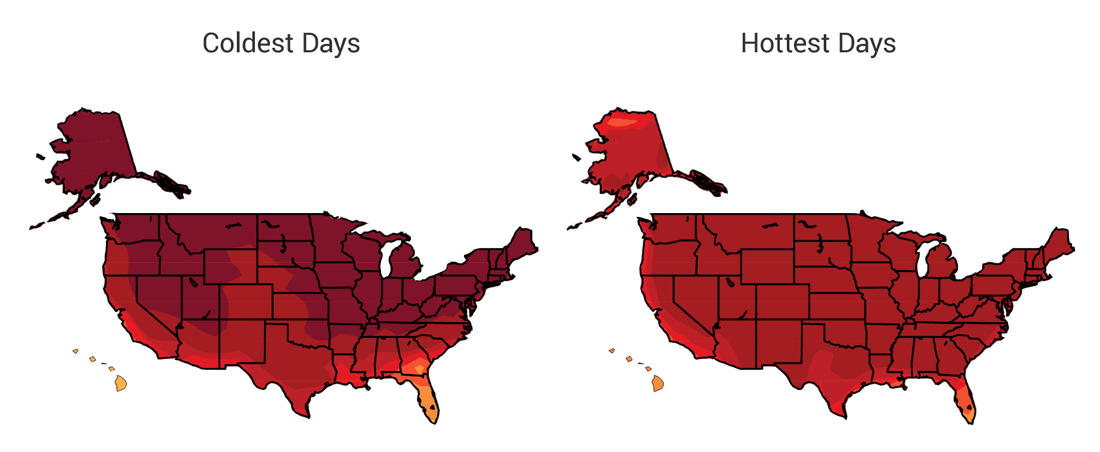|
November 30, 2015 marks the start of the UN climate change conference (COP21) in Paris. Numerous countries have made carbon reduction commitments in the run-up to this meeting. According to Janos Pasztor, Assistant Secretary-General on Climate Change, the commitments made to date equate to a projected 3°C increase in mean global temperature by the year 2100. Well, what does a 3°C increase in mean global temperature mean for forests in general and forests in the southwestern US in particular? First off, 3°C is equivalent to 5.4°F. When the temperature of a column of air goes up by 20°F, the amount of water it can hold doubles. So a 5.4°F increase in mean temperature means the atmosphere will hold roughly 25% more water. From an ecosystem perspective, when it is hotter and there is increased demand for water from the atmosphere, there is less water available for plants. This phenomenon is called atmospheric demand. When the air can hold more water that means that when a tree opens the pores in its leaves to take in carbon dioxide from the atmosphere, it loses more water to the atmosphere. At the same time, more water is also evaporating from the ecosystem. The net effect when you hold precipitation constant and temperature goes up? The system gets drier. For trees, higher atmospheric demand with no change in precipitation means they will grow less. At this point you may be thinking, what’s the big deal? So, trees could grow slower. Well, the big deal is that trees don’t experience mean temperature and neither do we. Here in Albuquerque, the average annual temperature is 57.1°F, the average high in July is 90°F, and the average low in January is 26°F. The record high set in June 1994 is 107°F and the record low set in January 1971 is -17°F. When we break a temperature or rainfall or snowfall record, these events are classified as extreme. Extreme events are projected to occur more frequently as the amount of carbon dioxide in the atmosphere rises. If we substantially reduce the amount of carbon we emit to the atmosphere, the hottest days won’t get quite as hot as they could if we keep emitting carbon at our current rate. The effect of these really hot days on trees is that the trees lose lots more water to the atmosphere. These punctuated events can cause lots of trees to die. Park Williams has reconstructed a record of these hot droughts for the southwestern US and demonstrated the relationship between these events and tree death. Both reduced tree growth and increased tree death from higher temperatures is especially bad news when you consider the fact that trees help regulate our climate by absorbing carbon dioxide from the atmosphere. Each year approximately 25% of the carbon emissions we put into the atmosphere are absorbed by plant growth on land and trees account for a large fraction. According to the US National Climate Assessment, climate change is already making our forests more vulnerable to insects and disease, drought and fire. You don’t have to travel too far from Albuquerque to see evidence of tree mortality and large wildfires. So is limiting carbon emissions to hold the mean global temperature increase to 3°C sufficient? Well, it’s a good start, but we’re probably going to have to reduce our emissions further to limit the impacts of higher temperatures on forests.
0 Comments
Your comment will be posted after it is approved.
Leave a Reply. |
Details
Archives
October 2023
Categories
All
|




 RSS Feed
RSS Feed